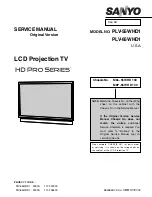
Functions
2.5 Distance Protection
SIPROTEC, 7SD5, Manual
C53000-G1176-C169-5, Release date 02.2011
128
Table 2-9
Evaluation of the measured loops for double earth faults in an earthed system in case both
earth faults are close to each other
During three-phase faults, usually all three phase-to-phase loops pick up In this case the three phase-to-phase
loops are evaluated. If earth fault detection also occurs, the phase-to-earth loops are also evaluated.
Double earth faults in non-earthed systems
In isolated or resonant-earthed networks a single-phase earth fault does not result in a short circuit current flow.
There is only a displacement of the voltage triangle (Figure 2-47). For the system operation this state is no im-
mediate danger. The distance protection must not pick up in this case even though the voltage of the phase
with the earth fault is equal to zero in the whole galvanically connected system. Any load currents will result in
an impedance value that is equal to zero. Accordingly, a single-phase pickup phase-to-earth is prevented
without earth current pickup in the 7SD5.
Figure 2-47
Earth fault in non-earthed neutral system
With the occurrence of earth faults — especially in large resonant-earthed systems — large fault inception tran-
sient currents can appear that may evoke the earth current pickup. In case of an overcurrent pick-up there may
also be a phase current pickup. The 7SD5 features special measures against such spurious pickups.
With the occurrence of a double earth fault in isolated or resonant-earthed systems it is sufficient to switch off
one of the faults. The second fault may remain in the system as a simple earth fault. Which of the faults is
switched off depends on the double earth fault preference which is set the same in the whole galvanically-con-
nected system. With 7SD5 the following double earth fault preferences (Parameter
1520
PHASE PREF.2phe
)
can be selected:
Loop pickup
Evaluated loop(s)
Setting of parameter 1521
L1-E, L2-E, L1-L2
L2-E, L3-E, L2-L3
L1-E, L3-E, L3-L1
L2-E, L1-L2
L3-E, L2-L3
L1-E, L3-L1
2Ph-E faults = Block leading Ø
L1-E, L2-E, L1-L2
L2-E, L3-E, L2-L3
L1-E, L3-E, L3-L1
L1-E, L1-L2
L2-E, L2-L3
L3-E, L3-L1
2Ph-E faults = Block lagging Ø
L1-E, L2-E, L1-L2
L2-E, L3-E, L2-L3
L1-E, L3-E, L3-L1
L1-E, L2-E, L1-L2
L2-E, L3-E, L2-L3
L1-E, L3-E, L3-L1
2Ph-E faults = All loops
L1-E, L2-E, L1-L2
L2-E, L3-E, L2-L3
L1-E, L3-E, L3-L1
L1-L2
L2-L3
L3-L1
2Ph-E faults = Ø-Ø loops only
L1-E, L2-E, L1-L2
L2-E, L3-E, L2-L3
L1-E, L3-E, L3-L1
L1-E, L2-E
L2-E, L3-E
L1-E, L3-E
2Ph-E faults = Ø-E loops only
















































